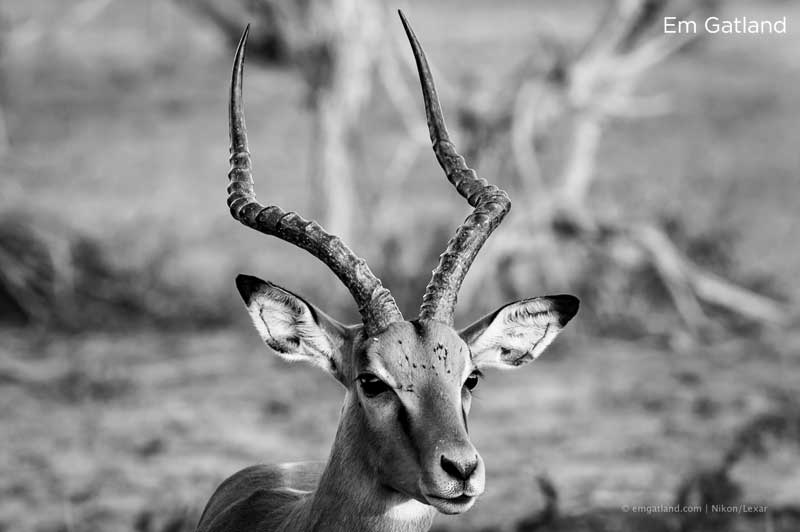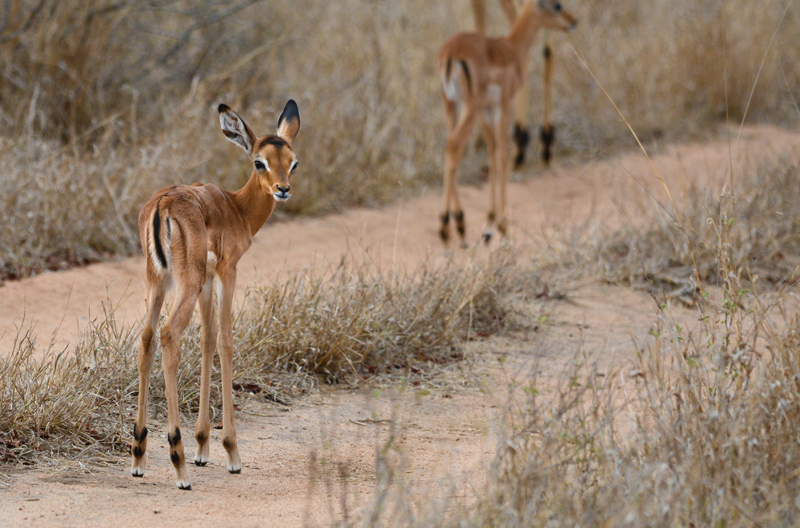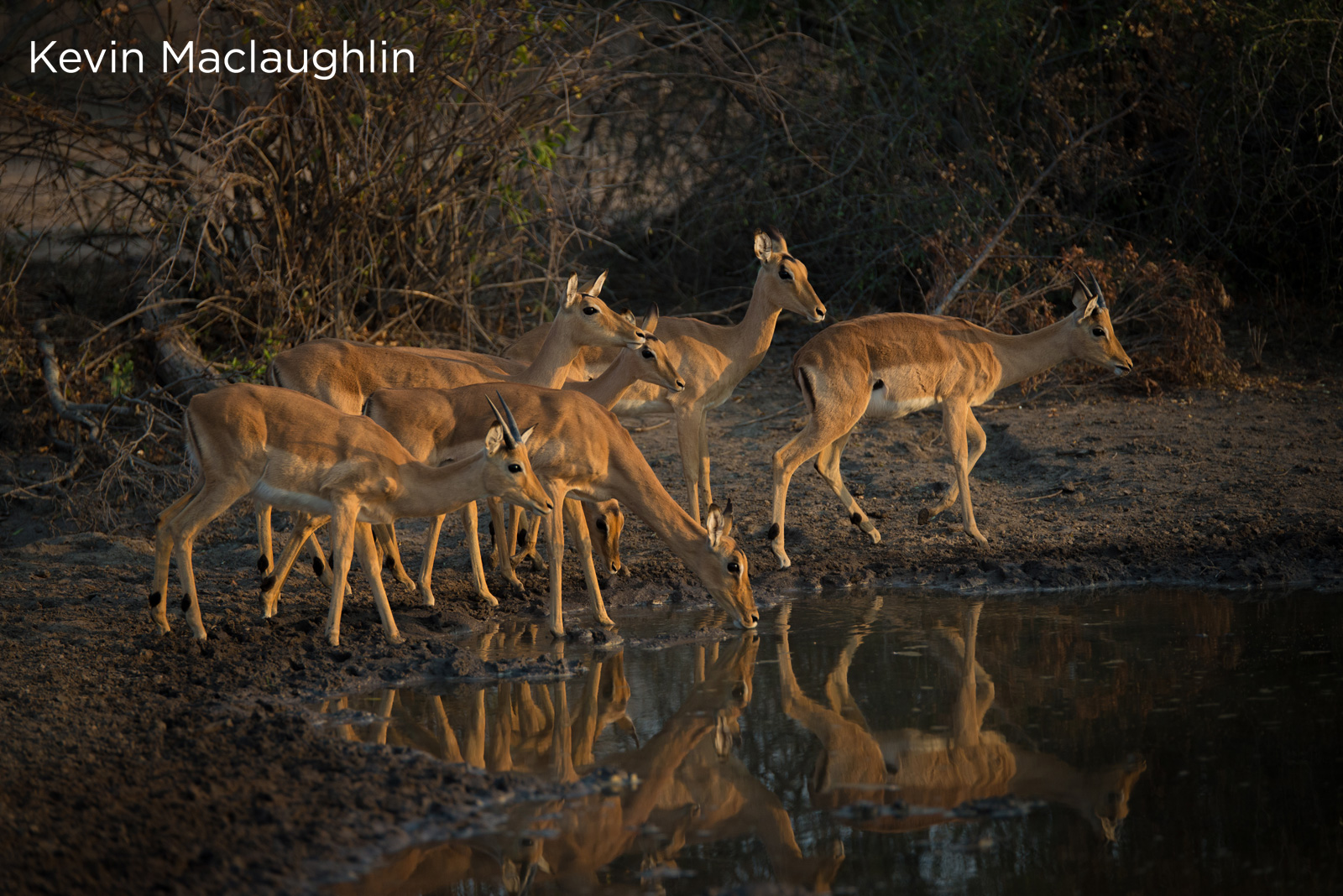The impala is the most commonly spotted species of plains game in the Lowveld region, and their presence is widespread throughout the Greater Kruger. These agile, athletic and elegant antelope fulfil many roles in the wild. A few of these roles include : being a vital food source for predators (in particular wild dogs), providing a natural landscaping service and being one of the moving predator-alarm systems for other wildlife.
It’s always a treat to see impala browsing on the succulent greens of the bushveld. In fact, impala are so prolific that on day 2 or 3 of your safari you’re overlooking the herds in favour of finding other wildlife. You might even hear fellow guests muttering “not impala again”! The fact is, we need impala. And they really are wonderfully graceful creatures.
Currently we are in the peak of the 3 week impala rutting season – a time of year where the testosterone filled males fight for ownership over females and land. It seems fitting that we find out a few facts about this species.
The Rams in Rutting Season
Impala start establishing and fighting for territories prior to the 3 week rutting period. Individuals within bachelor herds want to find a prime section of territory that will lure in females. They will clash horns and fight other males for land ownership. The rut begins when the dominant ram has found and settled into his turf. He will then begin the process of luring in herds of females to graze on his fertile grounds. The male will emit a series of barks and vocalisations to advertise their kingdom, and will chase other males out from their section of land. The impala rut is a noisy time of year!
During the rut the ram’s testosterone levels skyrocket and he will attempt to mate with ALL available females. The more forceful young males will come in and lock horns with the victor in an attempt to take over the land and females. The unsuccessful rams are ousted and forced to live in bachelor herds.

Impala Cows Give Birth at a Similar Time
Pregnant ewes will leave the herd to give birth after a gestation period of six to seven months. The calf is introduced to the herd after a couple of days – the ewe and calf cannot be without the protection of the herd for long periods of time. Females within the herd generally give birth within a week of one another, and tend to only birth one calf. Impala are synchronous breeders that all breed at a similar time of year within the rutting season, so it makes sense that calves are all born at a similar time.
The rutting season for rams is during May, which means the birthing season is November. The Kruger bushveld is a summer rainfall region, which means by the time November rolls around there is ample nutritious greenery for ewes to keep well-fed and healthy.
There are so many little lambs, tired rams and vulnerable ewes this time of year. This is when predators have absolute easy access to prey!

Wild Dogs and Impala
There’s a certain harmony and flow within nature that we’re often not aware of unless we spend years studying the wild. Sometimes it’s a beneficial relationship, and other times it’s more of a “food chain” relationship where one party benefits. One of these unique relationships is between wild dogs and impala. The start of the wild dog denning period coincides with the end of the impala rut. Rams are exhausted and make for easy prey, and the dogs need a quick supply of food while they focus on protecting their den site and feeding their young.
Wild dogs are also inadvertently responsible for the mixing of impala territories, that ultimately leads to new genetic lines. Wild dogs hunt using a method called coursing – they basically chase their prey until the point of exhaustion. They tend to chase exhausted rams out of their kingdom and into new lands, forcing them to seek out new females and territories. This is provided they survive a potential attack from wild dogs!


